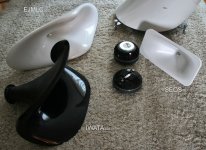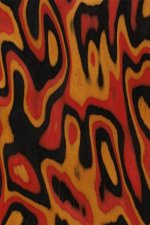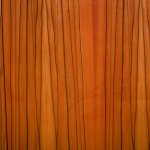Yes, if you remap the data to FFT bins at 44.1 kHz then I can live with that.
For a non detailed picture, minimum phase is probably OK. HOM are decidedly not minimum phase, nor is diffraction in general, but I don't know to what extent my approach is sensitive to this issue. I can plot the raw Magnitude only data, but then it would not be as clean as when the data is fit to the polar modes.
For a non detailed picture, minimum phase is probably OK. HOM are decidedly not minimum phase, nor is diffraction in general, but I don't know to what extent my approach is sensitive to this issue. I can plot the raw Magnitude only data, but then it would not be as clean as when the data is fit to the polar modes.
I got the crossovers adjusted a little better on those homebrew 18s crossed at 750Hz (took the waveguide level down) and have been listening today. Sound pretty good to my ear, don't know whether it would sound better crossed at 900 like originally intended, but quite nice as they are. I'm not hearing any odd honks or strange sounds, in fact the integration with the woofers is very good (these all subjective opinions of course, probably not worth a lot!). But they easily pass the "Elvis Costello" voice honk test!
I'll probably leave them this way until I get a MiniDsp and try some active crossover/delay/PEQ circuits (on the theory that it will be easier than working with the box of inductors and caps and resistors I have now for tossing together passive crossovers). I'll be taking them to the MWAF crossed over at this very low point probably (though will probably kick up the highs a little to compensate for the expected drop when I get the foam from Earl). Anyway, based on this experiment I'd still be in favor of driving a SEOS-18 from a 1" DE250, certainly before I'd mess with adding a separate tweeter on top.
I'll probably leave them this way until I get a MiniDsp and try some active crossover/delay/PEQ circuits (on the theory that it will be easier than working with the box of inductors and caps and resistors I have now for tossing together passive crossovers). I'll be taking them to the MWAF crossed over at this very low point probably (though will probably kick up the highs a little to compensate for the expected drop when I get the foam from Earl). Anyway, based on this experiment I'd still be in favor of driving a SEOS-18 from a 1" DE250, certainly before I'd mess with adding a separate tweeter on top.
Attached are the FRD files, I converted to 44.1kHz FFT spaced (8k length) and included Hilbert Phase. (or I can IFFT to impulse response if that helps).
Bill
Edit -- I should've loaded the files in first and looked at them.... forgot that Praxis frd export only does frequencies being displayed, so these files are all missing stuff below 500Hz and above 20kHz (though what's there is FFT spaced). I will redo if you need....
Bill
Edit -- I should've loaded the files in first and looked at them.... forgot that Praxis frd export only does frequencies being displayed, so these files are all missing stuff below 500Hz and above 20kHz (though what's there is FFT spaced). I will redo if you need....
Attachments
Last edited:
Foam_os12.zip- OS 12" waveguide Holmimpulse data from Mabat letter f with foam and w without foam:
SEOS data - Seos_bms4550.rar
SEOS data - Seos_bms4550.rar
damn, that IWATA-300 is cool looking. I should have ordered mine in black
Doug, did you get yours yet?
A way to reveal HOM?
Earl, a thought just occurred to me --
What if I were to measure (and this time save!) the impulse response of a horn, and then generate another impulse response or frequency response of the same but using Hilbert Phase. They should differ in the parts that aren't minimum phase. Then if I time-align and subtract one from the other, I should get a signal for which the level depends somewhat on HOM and diffraction. As the HOM and diffraction aren't minimum phase, wouldn't the residual from the subtraction be dominated by the HOM and diffraction, mostly isolating them from the full response? (Assuming there is enough dynamic range and the Hilbert Phase is generated from wideband data, that is -- errors from those might limit the approach).
I'm still looking for a less complex way to quantify or detect higher order propagation modes, wondering whether that might do it. I should have all the software available to do this, just have to find some time when I can measure and play.
BTW- the foam arrived today, thanks! Maybe I can try the trick mentioned above for my horns with and without the foam.
HOM are decidedly not minimum phase, nor is diffraction in general...
Earl, a thought just occurred to me --
What if I were to measure (and this time save!) the impulse response of a horn, and then generate another impulse response or frequency response of the same but using Hilbert Phase. They should differ in the parts that aren't minimum phase. Then if I time-align and subtract one from the other, I should get a signal for which the level depends somewhat on HOM and diffraction. As the HOM and diffraction aren't minimum phase, wouldn't the residual from the subtraction be dominated by the HOM and diffraction, mostly isolating them from the full response? (Assuming there is enough dynamic range and the Hilbert Phase is generated from wideband data, that is -- errors from those might limit the approach).
I'm still looking for a less complex way to quantify or detect higher order propagation modes, wondering whether that might do it. I should have all the software available to do this, just have to find some time when I can measure and play.
BTW- the foam arrived today, thanks! Maybe I can try the trick mentioned above for my horns with and without the foam.
damn, that IWATA-300 is cool looking.
What a shame that looking good and sounding good have no relationship to one another.
Earl, a thought just occurred to me --
What if I were to measure (and this time save!) the impulse response of a horn, and then generate another impulse response or frequency response of the same but using Hilbert Phase. They should differ in the parts that aren't minimum phase. Then if I time-align and subtract one from the other, I should get a signal for which the level depends somewhat on HOM and diffraction. As the HOM and diffraction aren't minimum phase, wouldn't the residual from the subtraction be dominated by the HOM and diffraction, mostly isolating them from the full response?
Bill
That is precisely what I have wanted to do.
It is of no small concern to me that I have not had the time to do anything intellectual for almost three years now. I shouldn't complain because I made more money last year than ever before (I worked my ars off doing it!) - and this during a recession - but I have not had time to do anything other than what I am committed to doing.
Looking for HOMs as a perturbation to the "bulk" wave propagation is always going to have SNR problems. Thats why I started to look at modal methods. If you know signal processing then you know that any "modal" method is going to end up being far superior to any "residual" method. So I figured that I would just jump to what I knew would work and skip the approximation stuff in between. The modal stuff has worked very well thus far, I can see edge diffraction effects, etc. but it needs lots more work.
In the last AES I read a paper about a better approximation to sound radiation for a "loudspeaker like" source. I had to chukle because I had been doing this for almost 30 years now (to wit SPEAK has had this capability since the 1980's) - and this was an AES paper! Either the reviewers are getting soft or someone needs some publications for tenure. I don't know, but the paper was trivial, not even a good review of the topic. There was no reference to my book - about ten years old now - which has all this material in it.
Last edited:
- OS 12" waveguide Holmimpulse data from Mabat letter f with foam and w without foam:
SEOS data -
Did you ever consider the fact that not everyone can read Polish? I have no idea what to do once I click on those links. You need a better method.
Put them on a website that you have access to and have them downloaded when clicked.
Did you ever consider the fact that not everyone can read Polish? I have no idea what to do once I click on those links. You need a better method.
Have you ever considered thinking before being so negative?
For the links I suggest using a translator program. Jack's job isn't too spoonfeed you.
Did you ever consider the fact that not everyone can read Polish? I have no idea what to do once I click on those links. You need a better method.
Put them on a website that you have access to and have them downloaded when clicked.
My fault I haven't checked it. Try Rapidshare:
https://rapidshare.com/files/3554960340/seos_bms4550.rar
https://rapidshare.com/files/1246949953/foam_os12.zip
OS-12 was designed for DIY in Czech Republic according to a given spec. We intentionally haven't made other OS profiles so that Earl can fill the gap. Instead we've made SEOS line.
What a shame that looking good and sounding good have no relationship to one another.
From a non-techie, but still: I would add that pointing out a non-relation here says as little as pointing out the opposit; if there's no relation a good looking horn could just as well sound good as bad, so why the remark unless you're negatively biased?
What a shame that looking good and sounding good have no relationship to one another.
lmao!! You may have a PhD but its definitely not in marketing. You probably need to take a Business 101 course because if you do not think looks matter then you should not be in the business of selling products people not only listen to but look at. There is a reason many, many of us never bought your speakers but you still do not get it.
I wonder how that speaker business of yours doing in the US?
Last edited:
- Home
- Group Buys
- Waveguides and horns


